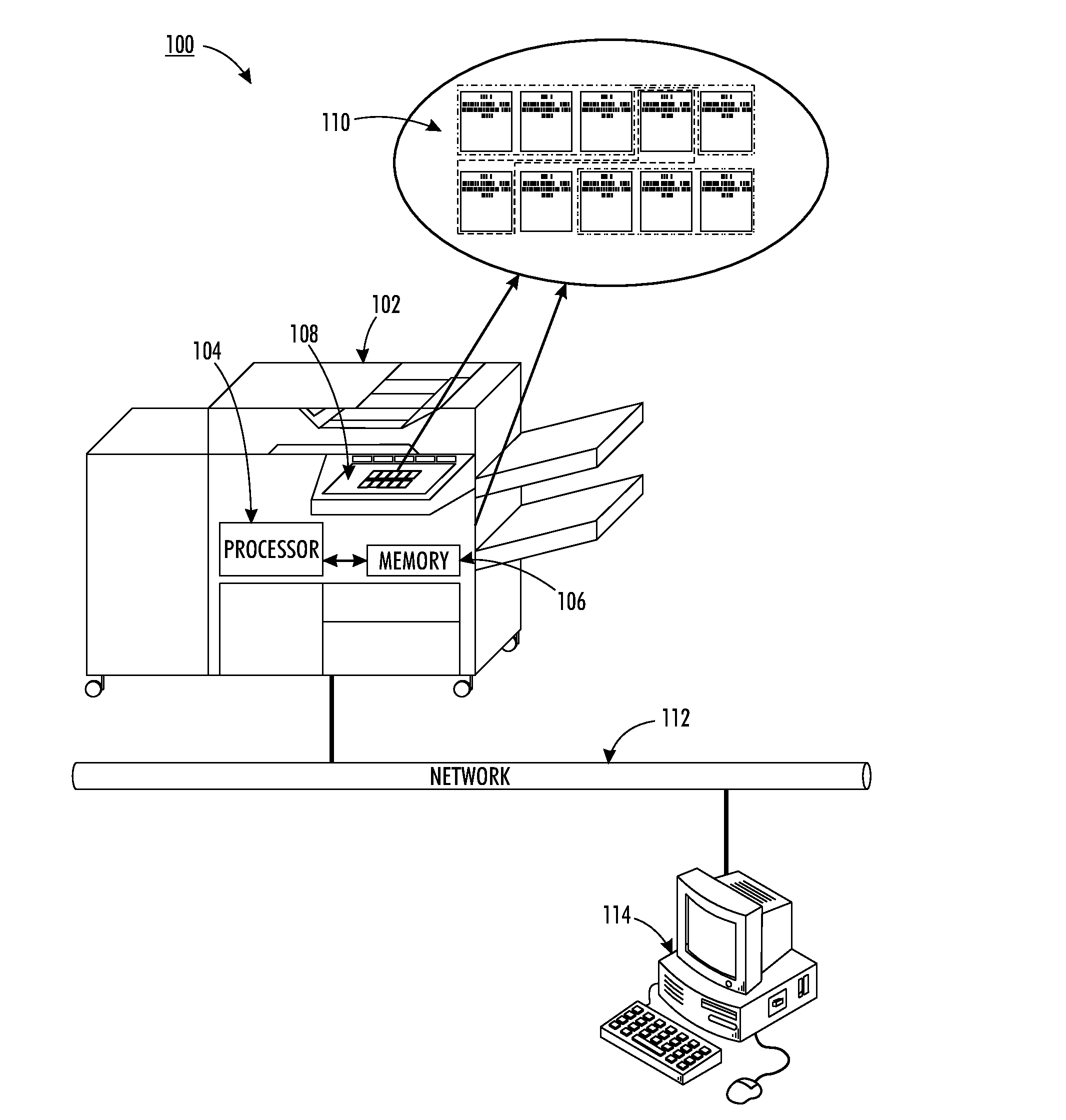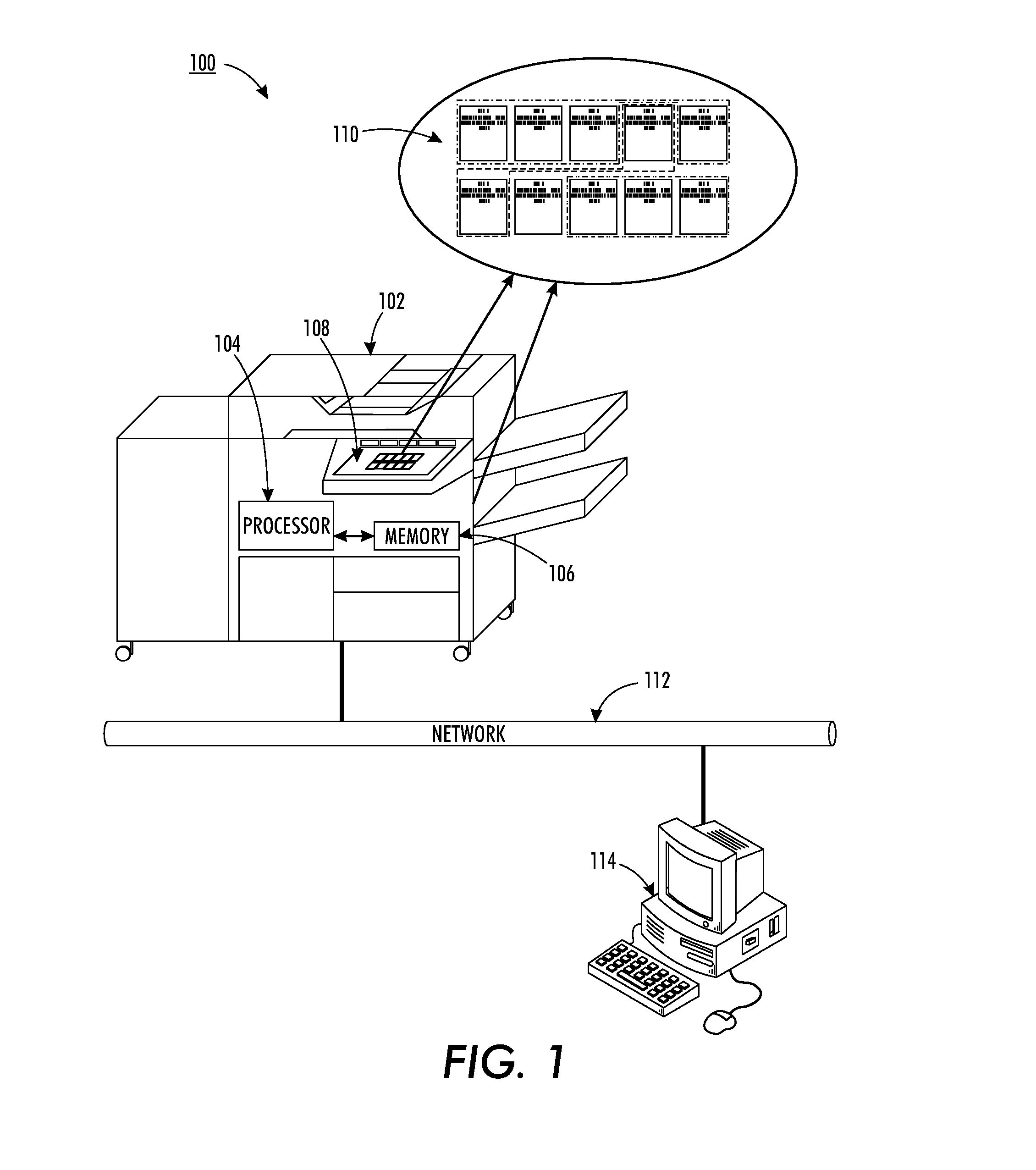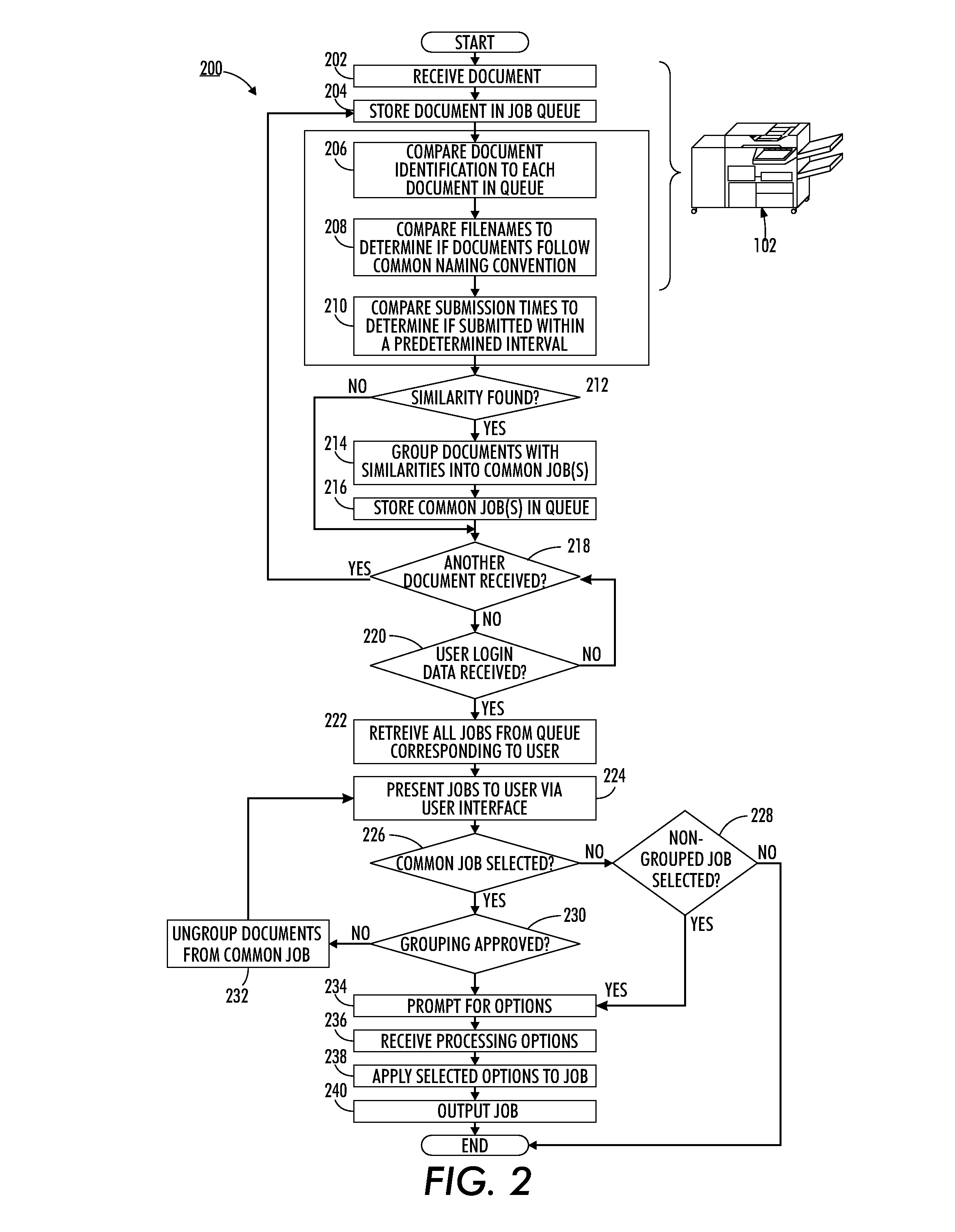Automatic aggregation of multiple documents into a common processing job
a processing job and automatic technology, applied in the direction of digital output to print units, visual presentations, instruments, etc., can solve the problems of inability to combine such jobs at the multifunction device, substantial waste of output media and toner, and time and effort expended manually sorting, staples,
- Summary
- Abstract
- Description
- Claims
- Application Information
AI Technical Summary
Benefits of technology
Problems solved by technology
Method used
Image
Examples
Embodiment Construction
[0017]One or more implementations of the subject application will now be described with reference to the attached drawings, wherein like reference numerals are used to refer to like elements throughout.
[0018]The subject application presents methods and systems for intelligent, automatic grouping of individual print jobs into a common job at a multifunction device. When a user submits multiple documents to the multifunction device, i.e., file per page, the multifunction device stores the received jobs in a job processing queue. The jobs are then analyzed to determine the filenames, submission times, and other such data associated with each job in the queue. Those jobs that have share a common naming convention, e.g., page 1 of 4, page 2 of 4, page 1 of 3, page 3 of 3, as well as submission times that are within a predetermined interval, e.g., within 1 minute of each other, within 2 minutes of each other, etc., are then automatically grouped into a common job within the queue on the m...
PUM
 Login to View More
Login to View More Abstract
Description
Claims
Application Information
 Login to View More
Login to View More - R&D
- Intellectual Property
- Life Sciences
- Materials
- Tech Scout
- Unparalleled Data Quality
- Higher Quality Content
- 60% Fewer Hallucinations
Browse by: Latest US Patents, China's latest patents, Technical Efficacy Thesaurus, Application Domain, Technology Topic, Popular Technical Reports.
© 2025 PatSnap. All rights reserved.Legal|Privacy policy|Modern Slavery Act Transparency Statement|Sitemap|About US| Contact US: help@patsnap.com



